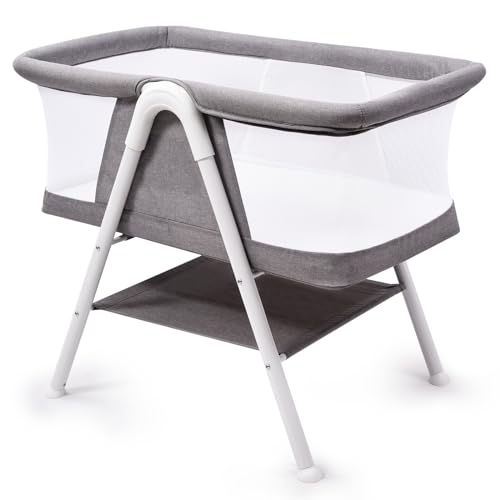So , You've Purchased Tots And Cots ... Now What?
Tots and Cots: A Comprehensive Guide for Parents
When it pertains to guaranteeing a safe and comfy sleeping environment for babies and young children, the choices parents make— varying from cribs to cots— can substantially affect their well-being. Today's short article dives deep into the intricacies of selecting the very best sleeping plans for tots, highlighting safety, style, functionality, and how these options evolve as a child grows.
Understanding Tots and Cots
Tots typically describe young kids, especially toddlers aged between 1 to 3 years, while cots are the sleeping plans particularly developed for infants and toddlers. The proper sleeping equipment for this age group includes numerous kinds of cots, cribs, and toddler beds.
Types of Cots
Different styles exist to satisfy the diverse requirements of both moms and dads and children. Below is a list describing the most typical types of cots available:
Standard Crib
- A traditional crib is created for infants and generally consists of sides that can be adjusted to different heights.
Convertible Crib
- This type of crib can convert into a toddler bed, daybed, or full-sized bed as the child grows, making it a long-term financial investment.
Portable Crib
- Also understood as travel cots, these are lightweight and easily collapsible, perfect for traveling or smaller home.
Co-Sleeper
- A co-sleeper crib connects to the side of the moms and dads' bed, enabling for easy gain access to while guaranteeing the baby has a separate and safe sleeping space.
Young child Bed
- A toddler bed is a small bed that looks like a standard bed but is developed particularly for toddlers, usually including safety rails.
Mini Crib
- Mini cribs are smaller sized than basic cribs, making them a great option for tight spaces, but they are appropriate for babies only.
Safety Considerations
Making sure security is critical when selecting a cot for a child. Here are vital safety standards parents must think about:
- Check for CPSC Certification: Ensure that the cot follows the Consumer Product Safety Commission (CPSC) standards.
- Avoid Drop-Sides: Cots with drop-sides have actually been connected to security threats, and the current safety regulations forbid them.
- Utilize a Firm Mattress: A firm bed mattress lowers the danger of suffocation and should fit snugly within the cot.
- Keep Bedding Simple: Use a fitted sheet and prevent pillows, comforters, and packed animals that can present suffocation risks.
- Follow Weight and Age Guidelines: Ensure the child has actually not surpassed the cot's weight limit and is still within the advised age.
Transitioning from a Cot to a Toddler Bed
The transition from a cot to a toddler bed can be an emotional turning point for both parents and kids. Here are steps to relieve the transition:
Timing
Deciding when to shift can be subjective, however it's typically recommended to make the switch in between 18 months and 3 years, based upon aspects like:
- Physical Ability: If the kid is climbing up out of the cot.
- Potty Training: Consider transitioning if the child is potty training and needs much easier gain access to.
- Habits: Exhibiting signs of maturity, such as following instructions or revealing a desire for self-reliance.
Tips for Making the Transition Smooth
Include Your Child: Let the child select their brand-new bedding or bed design to instill excitement about the modification.
Keep Routine Consistent: Maintain the child's bedtime routine to supply convenience throughout this period of change.
Describe the Change: Discuss the shift to a toddler bed favorably, making it sound like a terrific experience.
Precaution: Place the bed against the wall or usage bed rails to avoid falling throughout sleep.
Selecting the Right Bed
When selecting a young child bed, moms and dads need to consider factors like:
- Height: Low-profile beds are perfect for toddlers who might fall out during sleep.
- Durability: Ensure the bed can stand up to active play in addition to sleep.
- Design and style: Choose a style that complements the child's space and is attracting the kid.
Selecting the best cot for your little one can be a difficult process, however comprehending the choices readily available, key security considerations, and the best timing for transitioning to a young child bed can make this journey simpler for moms and dads. Investing time and effort into these choices will guarantee that your child has a safe, comfy, and nurturing sleep environment.
- * *
Frequently asked questions
1. What is the distinction in between a cot and a crib?
- A cot is usually a smaller sized bed developed for more youthful young children, while a crib is a bigger bed that is typically ideal for babies up to 3 years of ages.
2. When should I move my kid from a crib to a toddler bed?
- The transition time is generally between 18 months and 3 years; this modification is based on the kid's physical capabilities and behavioral indications.
3. How can I guarantee my child is safe while sleeping?
- Constantly comply with safety requirements, utilize a company mattress with a basic bed linen arrangement, and monitor the cot's weight limitation.
4. What should I do if my kid tries to climb up out of the cot?
- If your kid is climbing up out, it might be time to think about transitioning to a toddler bed to prevent falls.
5. Can I use the exact same mattress when transitioning?
Typically, it is best to change the crib mattress with one that specifies to the young child bed. Suggested Resource site fits snugly and sticks to security standards.
- *
By considering these elements, parents can model healthy sleep practices and provide their children with a safe and secure environment that promotes relaxing sleep. Buying quality sleeping arrangements will contribute to the kid's total development and joy.
